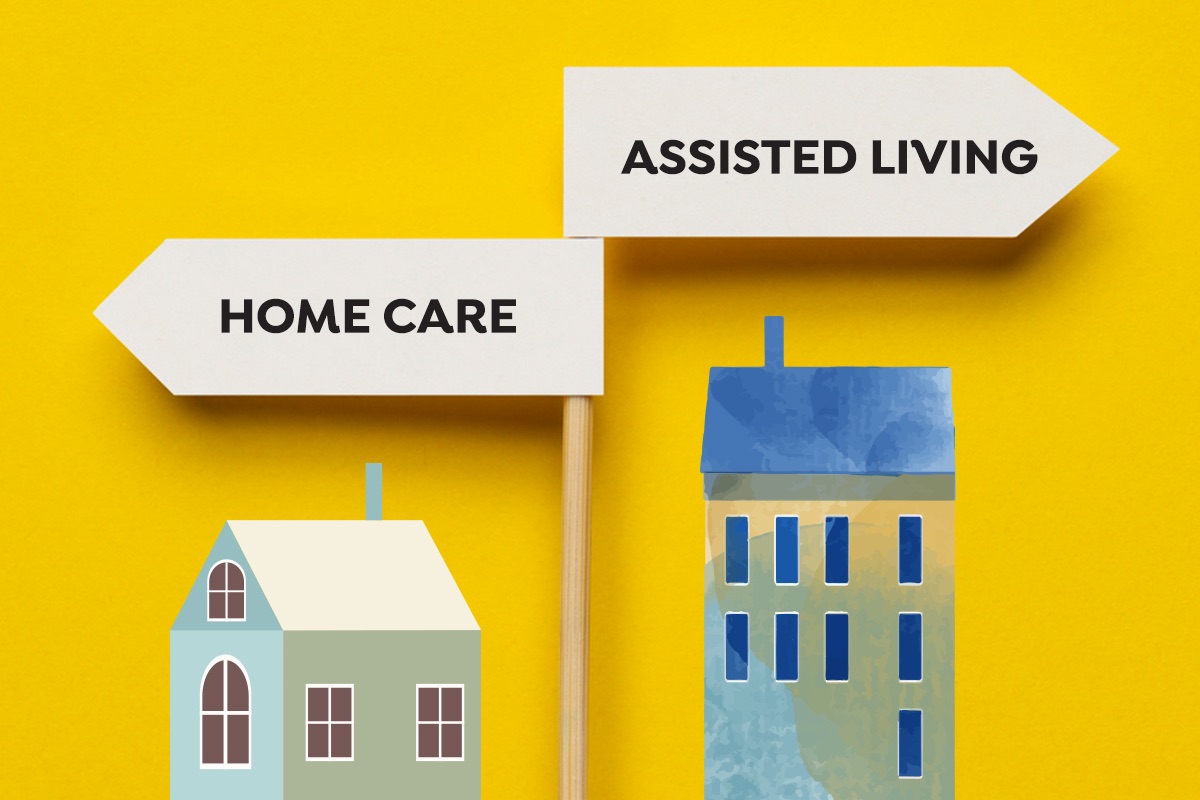
Assisted Living Homes vs. Home Care: How To Decide
Updated on: January 2023

Can you receive proper care in your home or would it be best to move into an assisted living home that can meet your long-term care needs? This is a question that many of us will be asking ourselves as we get older.Whether it is having to move around your home or making it around town to doctor’s visits and other important appointments, this is often a very difficult time for these individuals.
The good news is that advancements in technology and medical equipment are making it more feasible than ever to benefit from senior care at home while dealing with these struggles. However, remaining in the home is not the best choice for everyone.To make the best decision possible, you should consider a variety of different factors from your ability level to your finances and your available support network.
Find What You Need
What are Assisted Living Homes?
Assisted living homes are best for individuals who require very little senior care on a daily basis. This means that most assisted living homes provide residents with some help accomplishing various tasks such as organizing medications, but they don’t offer full-time long-term care.
Assisted living homes are also referred to as boarding homes, congregate housing, adult congregate care, domiciliary care, or residential care.There are almost 30,000 assisted living homes in the United States. These facilities currently house approximately 1.2 million residents. Most of these residents are mobile individuals over the age of 65.
Those who need a wheelchair to move around or suffer from behavioral or cognitive impairments are typically discouraged from moving to an assisted living facility since they require more specialized care. Although most assisted living residents eventually move on to nursing homes, some residents leave assisted living homes to return home or move to another assisted living facility.
Maintaining Independence
Assisted living homes allow residents to maintain their independence as long as possible without compromising their safety. They support residents’ privacy, autonomy and dignity while focusing on community and family involvement.
Most assisted living homes also promote a resident’s right to practice (or abstain from) religion, to interact and socialize with people both in and out of the facilities, to participate in residential councils, to continue using personal possessions and to manage their own finances.
Visitors can typically come to an assisted living facility at any time of the day and even stay overnight. Pets are also allowed in many assisted living homes.
Residence and Services
People living in an assisted living home typically live in their own private or semi-private apartments. These residences usually include a bedroom, bathroom and kitchen area, but this can differ from one facility to another. Residents get daily assistance with normal tasks such as eating, dressing and bathing. Dining programs offer meals three times daily, and activities for exercise and education are common.
Other assisted living services may include housekeeping, health services, recreational activities, laundry services, social and religious activities, transportation services, third-party nursing care through a home health agency, 24-hour security and wellness programs.
What is In-Home Care?
The in-home caregiver is one of the fastest growing and most requested services in the United States today. Agencies providing in-home care offer a range of different services from simple companionship to supervision and personal care. In-home caregivers are appropriate for individuals who want to stay at home, but also need ongoing care that family members and friends cannot provide.
It allows seniors to age in the comfort of their own home. Most in-home care plans include a combination of assisted living, or non-medical, services and skilled health care services. In the past, there was no significant difference between “home health care” and “in-home care”; however, many people now refer to home health care when skilled nursing care is involved and in-home care when only non-medical care is required.
While those differences may seem insignificant, they are actually important since they help people understand the level of care being offered. This will, in turn, have a major effect on the cost of care and the sources of funding available to pay for these costs.
Non-Medical Care Services Typically Include:
- Personal care
- Companionship
- Supervision
- Laundry
- Light housekeeping
- Meal preparation
- Medication reminders
- Shopping
- Errands
- Transportation
Insurance companies and in-home care agencies often use an individual’s ADL (Activities of Daily Living) rating to determine the needs of that individual. ADL ratings are based on six basic activities that show an individual’s abilities to provide self-care. These activities are:
- Walking
- Bathing
- Transferring
- Dressing
- Eating
- Using the Toilet
Insurance firms use these activities to determine an individual’s eligibility for insurance benefits. In-home care agencies use them as an assessment tool to figure out the necessary charges for services and to ensure qualified caregivers are assigned to meet the individual’s needs. IADL, or Instrumental Activities of Daily Living, utilizes six tasks that determine the ability of an individual to live on their own in the home.
These Six Tasks Are:
- Managing personal finances
- Taking medications
- Using the phone
- Shopping for food and clothing
- Light housework
- Meal preparation
Although it is important to understand the differences between in-home and home health care in today’s terminology, it is true that, in reality, most individuals who require one form of care will eventually require the other as well.
Tips to Help You Choose
Even if you thoroughly understand the details of how assisted living homes and in-home care work, that does not mean this is an easy decision. This is an important step in your life or the life of your loved one, and you want to make sure you make the right choice. These tips should help you feel more confident making this decision.
First Step – Determine How Much Help You (or Your Loved One) Needs
Before you make any decisions, you must figure out the exact needs of your loved one. Once you understand these needs, you can compare them to the help that is already available.Start by making a list of everything your loved one needs assistance with on a monthly, weekly and daily basis. This will give you a clear picture of the right level of care required.
Then you need to really think about how much you, your family and friends can actually help. It is essential that you look at this based on the long-term. Your loved one may need ongoing care for years, so a few months of help will likely not be enough.
After looking at both of these lists, you will have a better idea of how much additional help will be required. This may make your decision on in-home care or assisted living immediately clear, and it may not. Either way, it will be a very helpful tool as you continue.
Evaluate The Pros And Cons
Obviously, both assisted living homes and in-home care services offer some great benefits, but both also have disadvantages based on your specific situation. As with any comparison, a simple pro and con analysis can be very helpful.
Pros and Cons of In-Home Care
Pros
-
It allows the individual to benefit from one-on-one care that can be tailored to meet their unique preferences and needs.
-
The senior gets to remain in the comfort of their own home or the home of a close relative as they get older.
-
The senior, along with their family and friends, have the opportunity to choose the person who will be providing care.
-
Instead of receiving care from many different caregivers, the individual can get comfortable with one caregiver.
-
Depending on when the care is needed and the skill level of the care required, in-home care can cheaper.
-
Different types of care can be combined to lower overall costs.
Cons
-
When 24/7 care is required, the costs can be very high.
-
The managing of caregivers and backup care planning requires continued family involvement.
-
While living in the home has its benefits, it can also lead to social isolation. This, in turn, can contribute to an array of health problems like depression and cognitive decline.
-
The home may need to be modified for wheelchair accessibility or safety precautions.
-
In-home care will not take care of several important tasks such as housekeeping, grocery shopping, home maintenance and personal care.
Pros and Cons of Assisted Living
Pros
-
Assisted living homes are more affordable when 24/7 care is required.
-
It allows the family to focus more on their relationship with the senior.
-
Residents have ample opportunities to socialize with others.
-
The family will not have to manage, schedule or hire caregivers.
-
The level of care can easily be increased as necessary
Cons
-
Since frequent changes to the staff are common, one-on-care won’t be as consistent.
-
The quality of care can differ depending on the specific staff members.
-
In some cases, residents may get kicked out of their assisted living home for a long list of reasons with little to no advanced notice.
-
Your loved one may simply not enjoy living in a group environment.
Although deciding between assisted living homes and home care can be stressful, you’ve already taken a big step toward making the right decision by learning more about both of these solutions. You’ll find the perfect care option soon!

